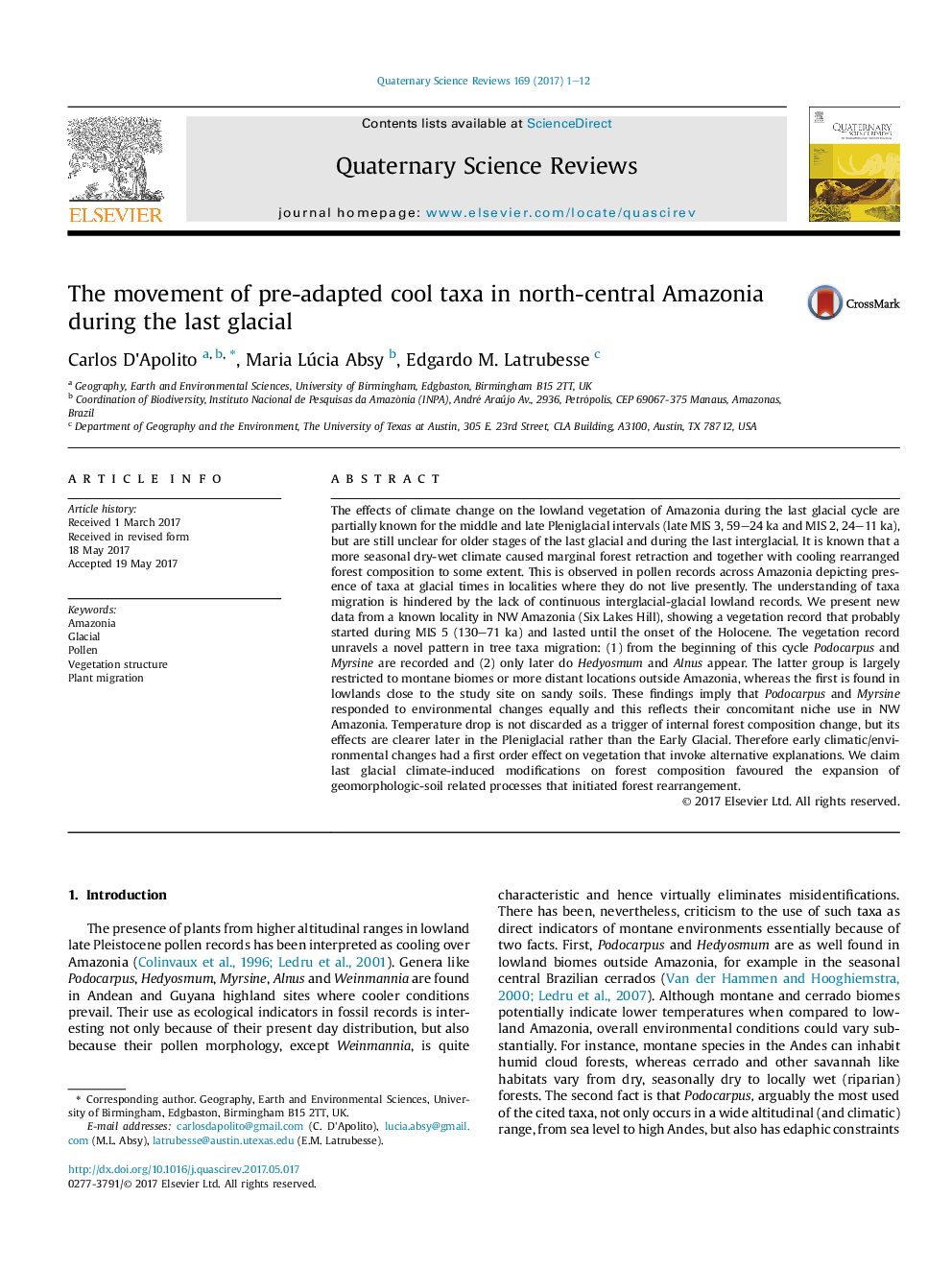| کد مقاله | کد نشریه | سال انتشار | مقاله انگلیسی | نسخه تمام متن |
|---|---|---|---|---|
| 5786640 | 1640766 | 2017 | 12 صفحه PDF | دانلود رایگان |
عنوان انگلیسی مقاله ISI
The movement of pre-adapted cool taxa in north-central Amazonia during the last glacial
ترجمه فارسی عنوان
جنبش تاکسونهای خنک از پیش تنظیم شده در منطقه آمازون شمالی در طول آخرین یخبندان
دانلود مقاله + سفارش ترجمه
دانلود مقاله ISI انگلیسی
رایگان برای ایرانیان
کلمات کلیدی
آمازونیا، یخبندان، گرده، ساختار گیاهی، مهاجرت گیاهی،
موضوعات مرتبط
مهندسی و علوم پایه
علوم زمین و سیارات
زمین شناسی
چکیده انگلیسی
The effects of climate change on the lowland vegetation of Amazonia during the last glacial cycle are partially known for the middle and late Pleniglacial intervals (late MIS 3, 59-24 ka and MIS 2, 24-11 ka), but are still unclear for older stages of the last glacial and during the last interglacial. It is known that a more seasonal dry-wet climate caused marginal forest retraction and together with cooling rearranged forest composition to some extent. This is observed in pollen records across Amazonia depicting presence of taxa at glacial times in localities where they do not live presently. The understanding of taxa migration is hindered by the lack of continuous interglacial-glacial lowland records. We present new data from a known locality in NW Amazonia (Six Lakes Hill), showing a vegetation record that probably started during MIS 5 (130-71 ka) and lasted until the onset of the Holocene. The vegetation record unravels a novel pattern in tree taxa migration: (1) from the beginning of this cycle Podocarpus and Myrsine are recorded and (2) only later do Hedyosmum and Alnus appear. The latter group is largely restricted to montane biomes or more distant locations outside Amazonia, whereas the first is found in lowlands close to the study site on sandy soils. These findings imply that Podocarpus and Myrsine responded to environmental changes equally and this reflects their concomitant niche use in NW Amazonia. Temperature drop is not discarded as a trigger of internal forest composition change, but its effects are clearer later in the Pleniglacial rather than the Early Glacial. Therefore early climatic/environmental changes had a first order effect on vegetation that invoke alternative explanations. We claim last glacial climate-induced modifications on forest composition favoured the expansion of geomorphologic-soil related processes that initiated forest rearrangement.
ناشر
Database: Elsevier - ScienceDirect (ساینس دایرکت)
Journal: Quaternary Science Reviews - Volume 169, 1 August 2017, Pages 1-12
Journal: Quaternary Science Reviews - Volume 169, 1 August 2017, Pages 1-12
نویسندگان
Carlos D'Apolito, Maria Lúcia Absy, Edgardo M. Latrubesse,
